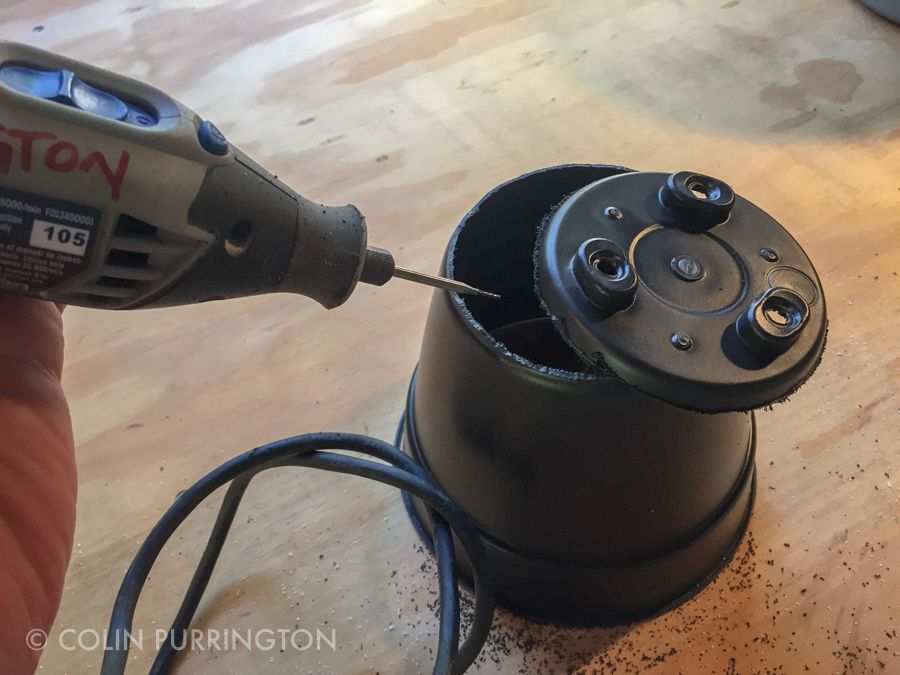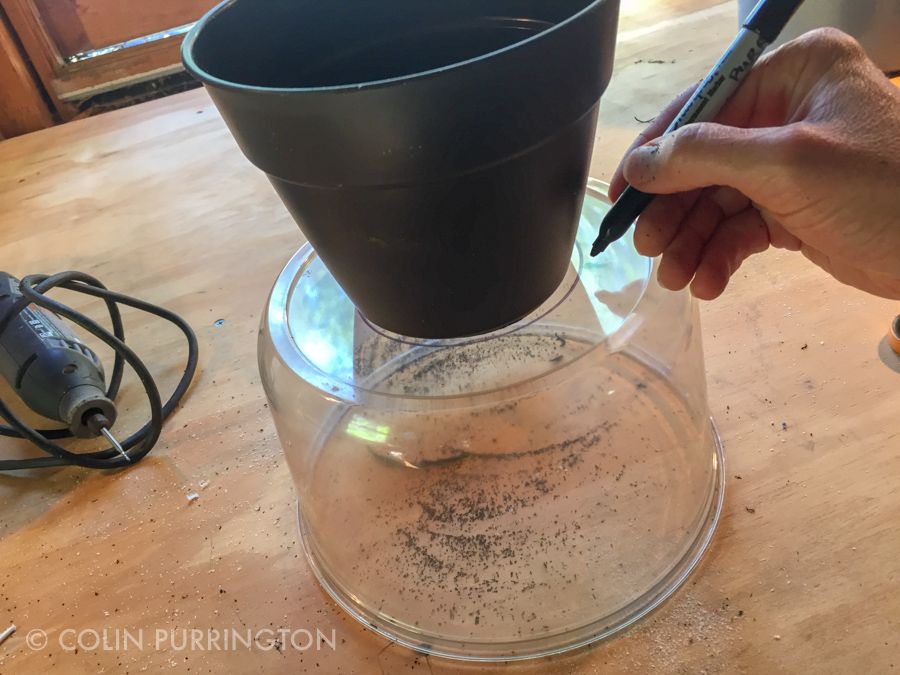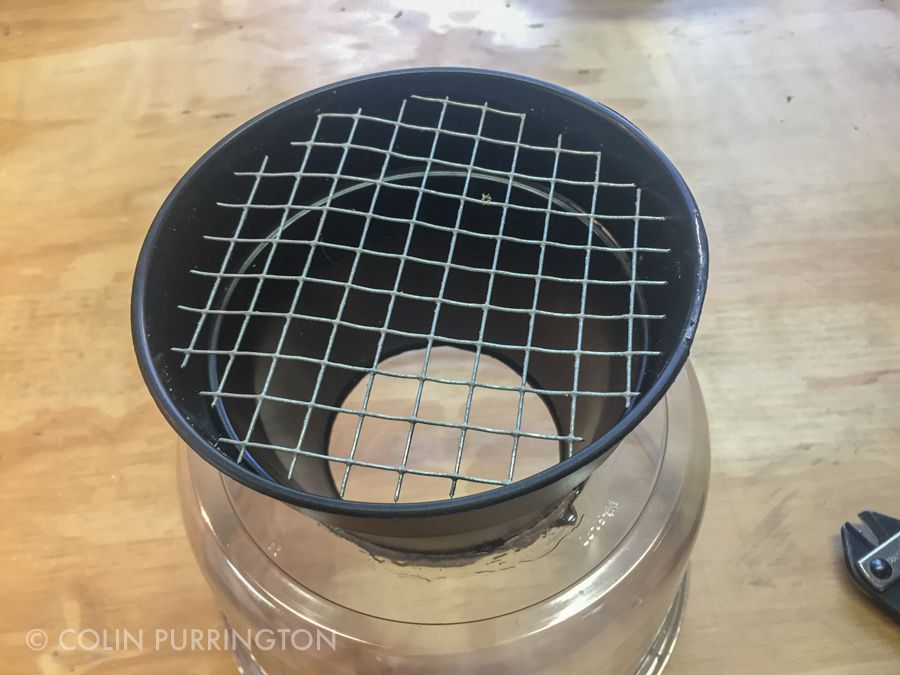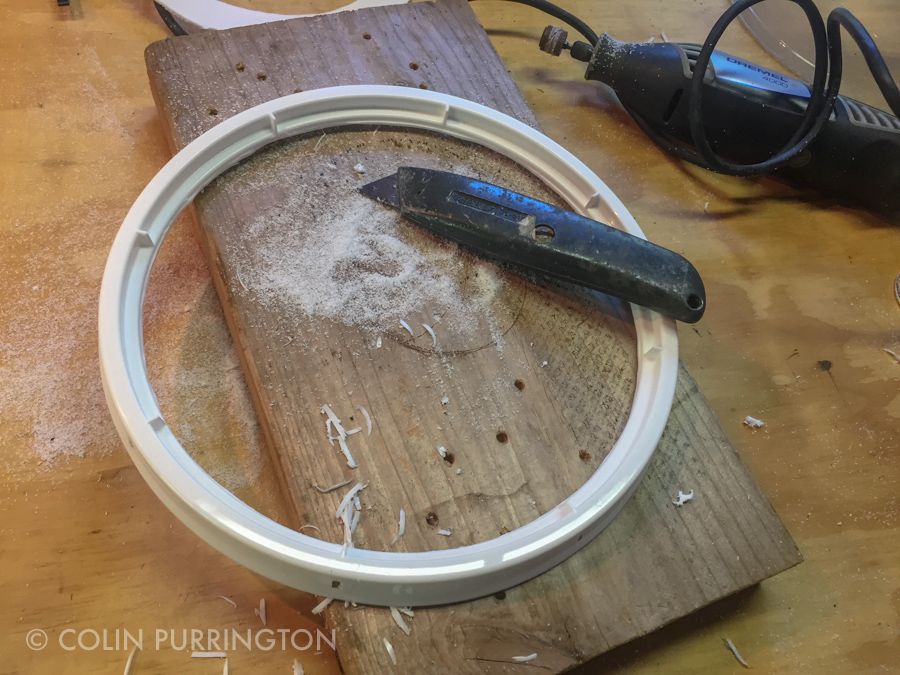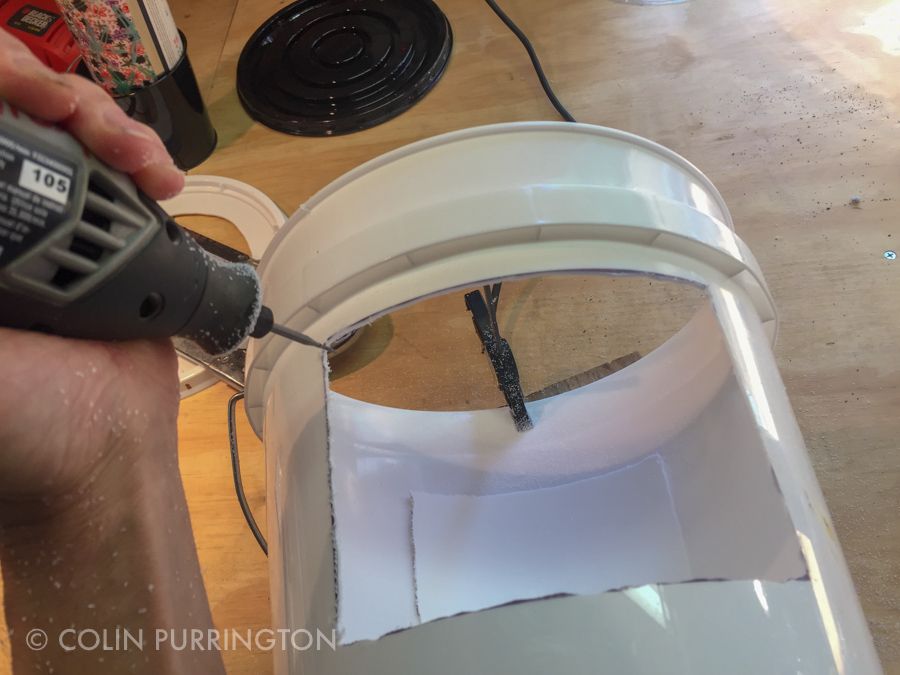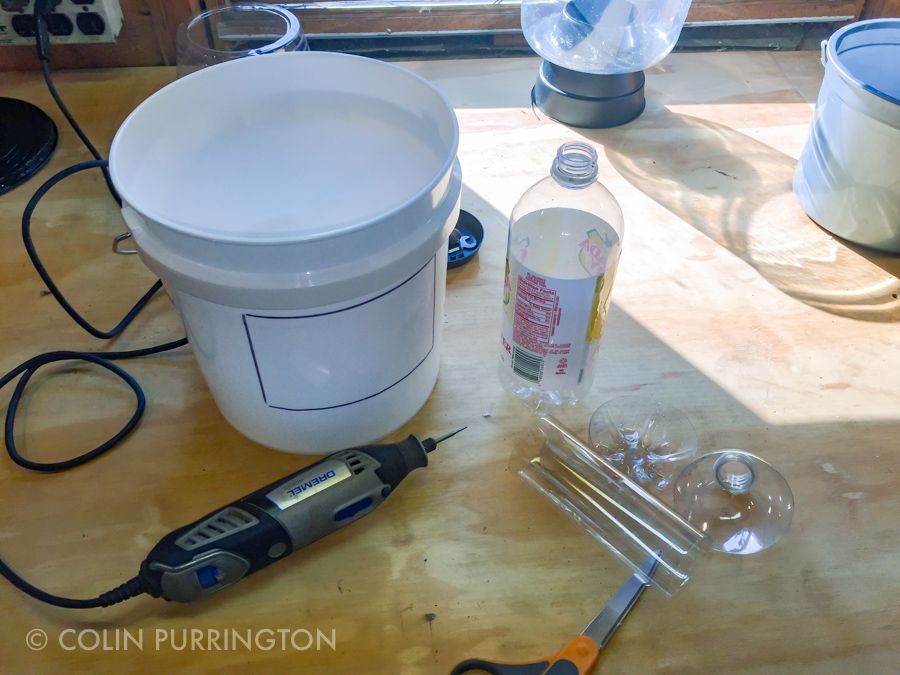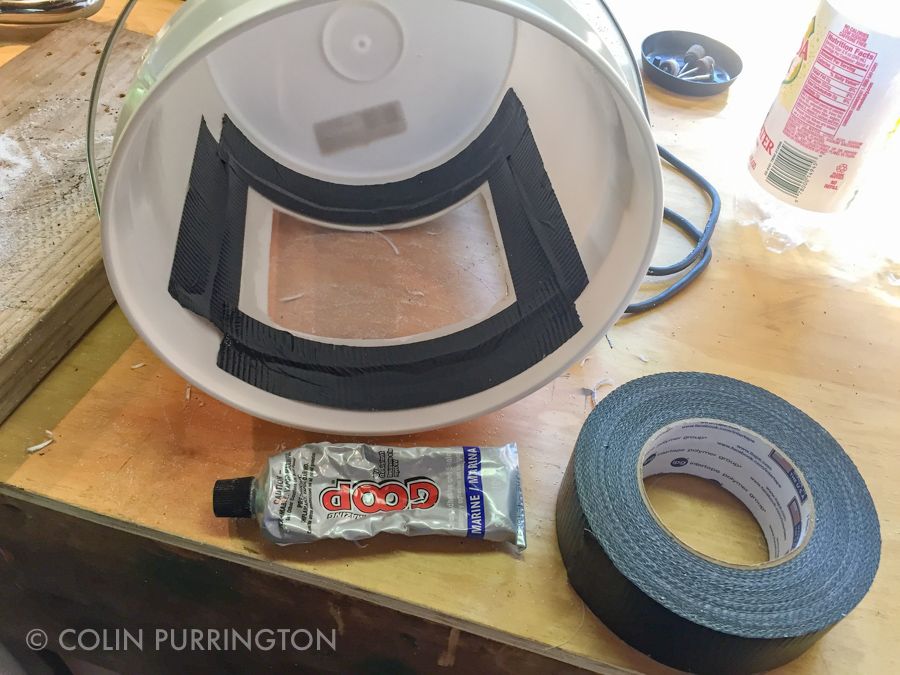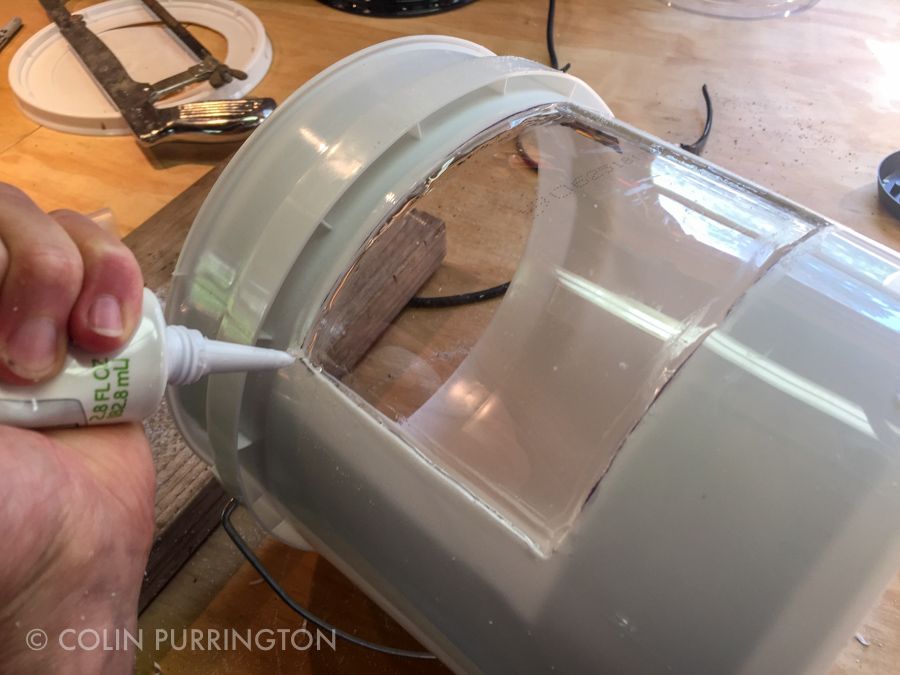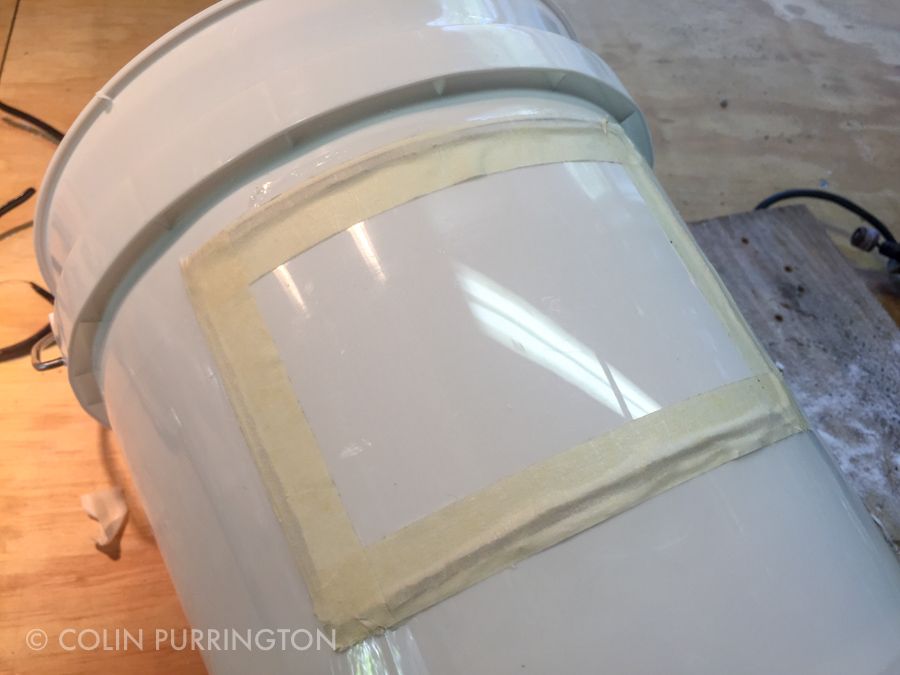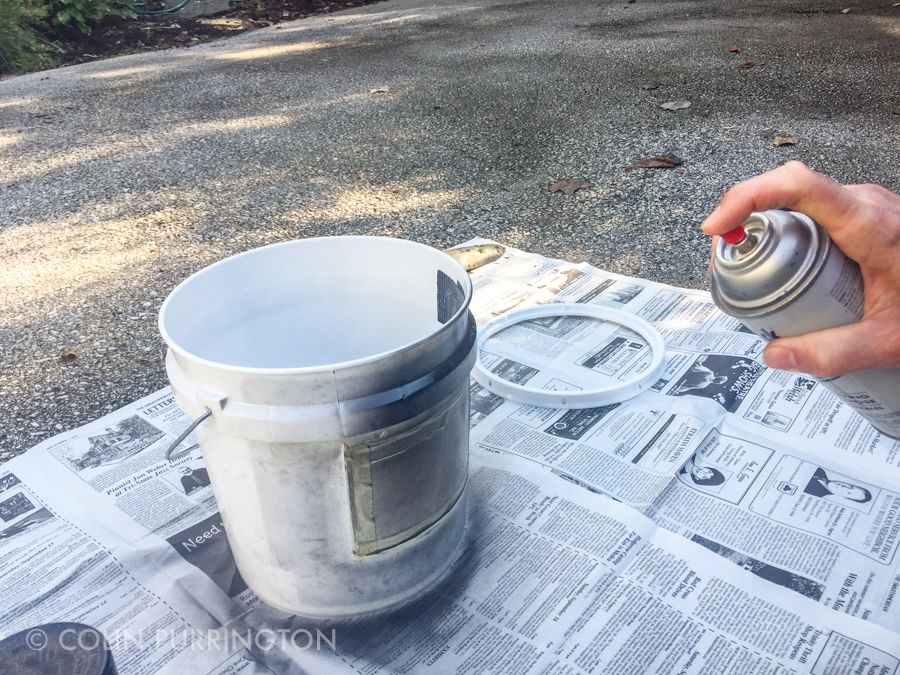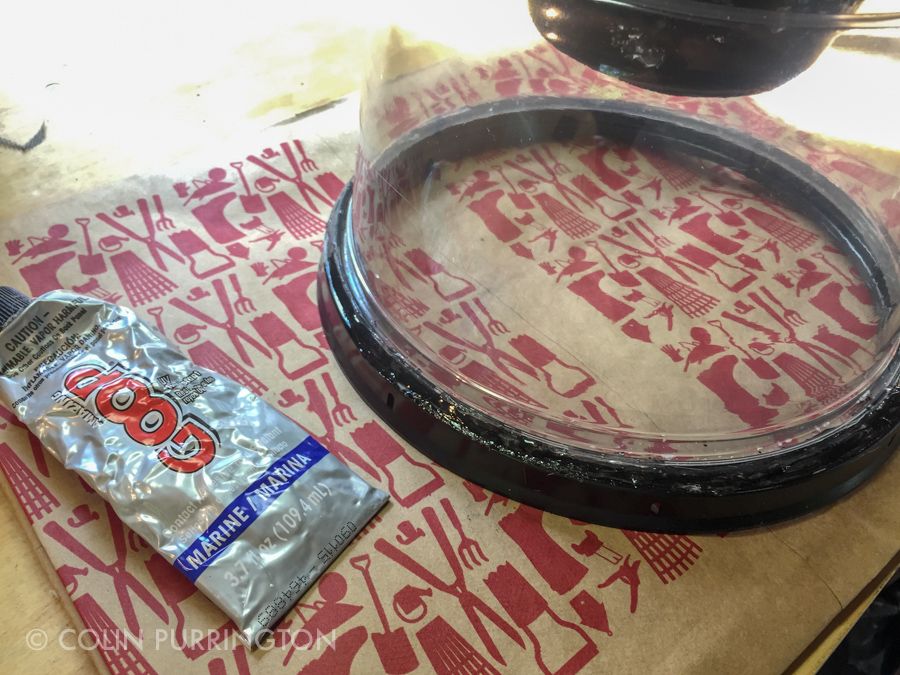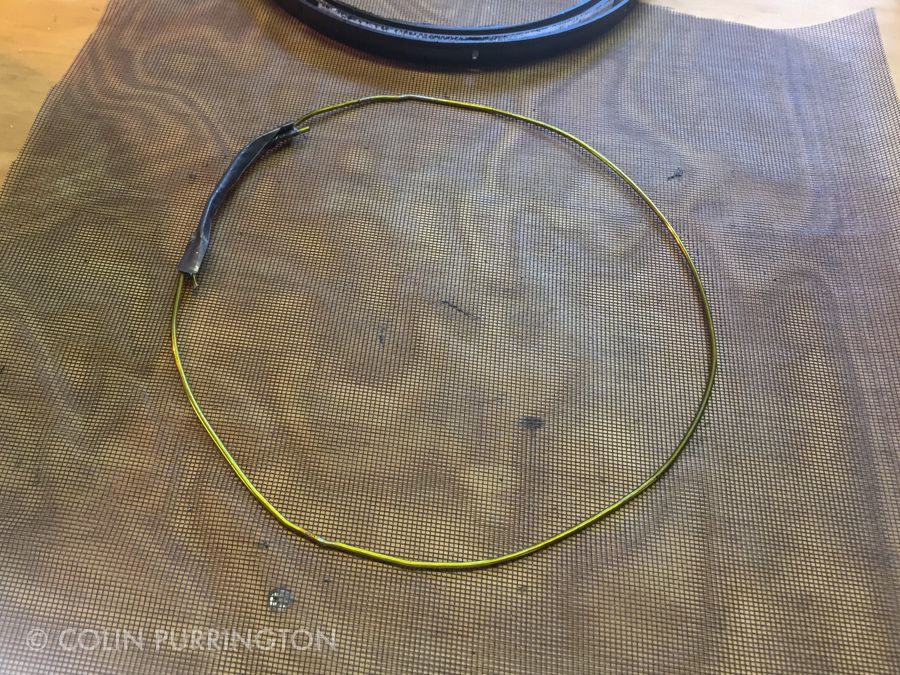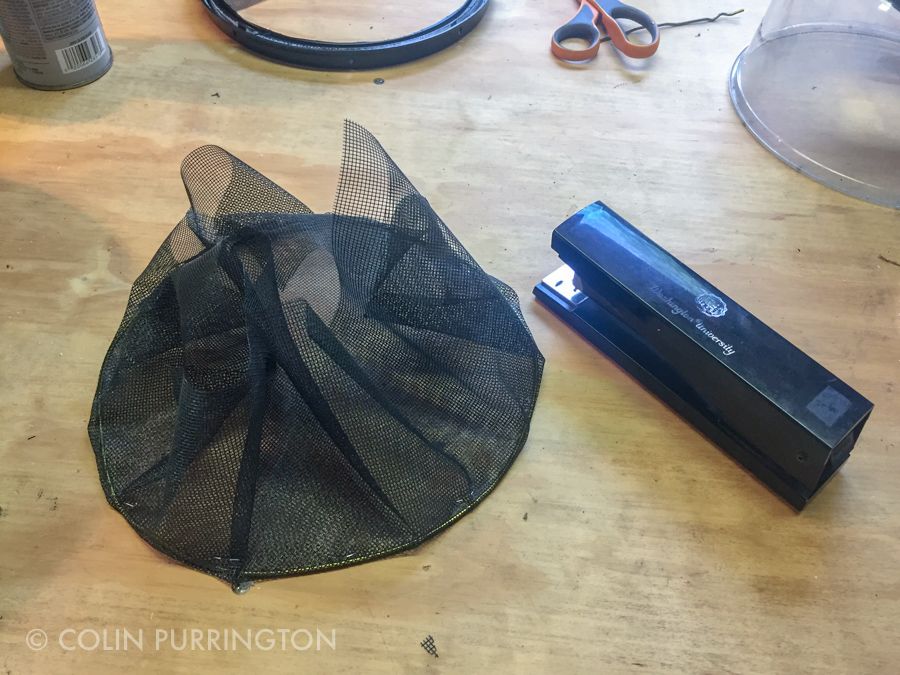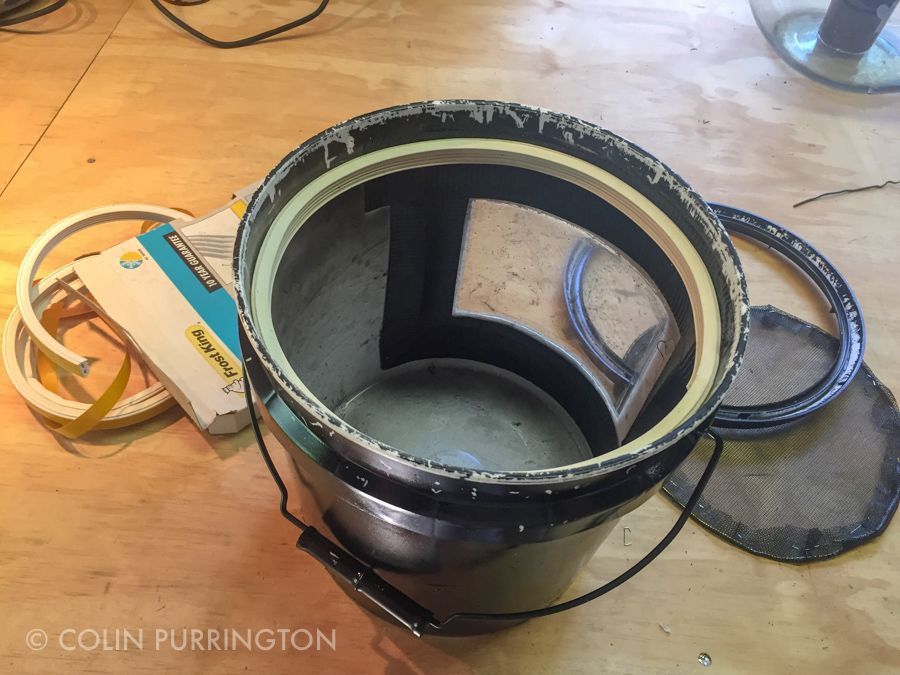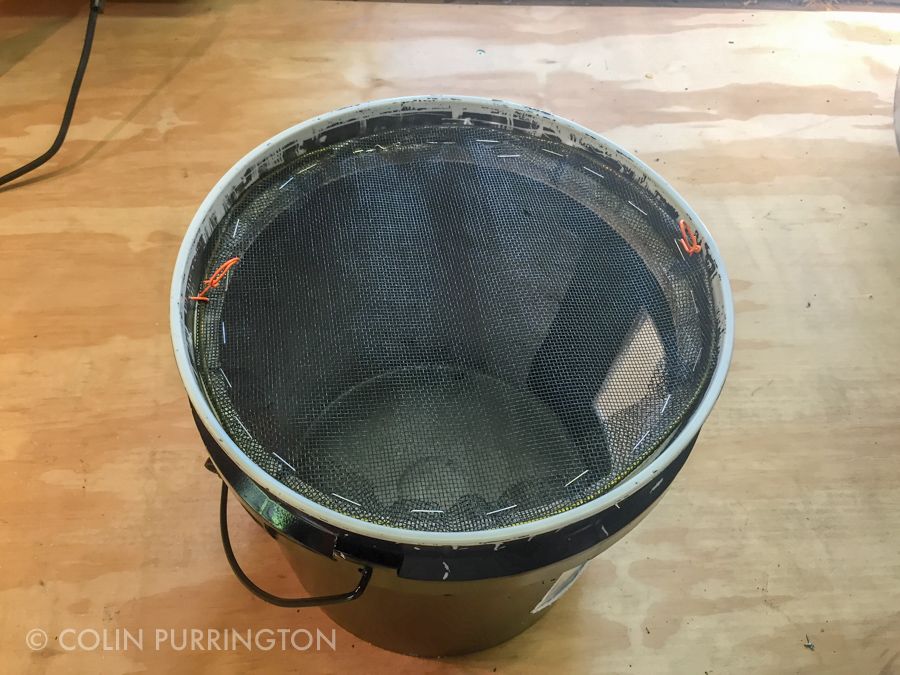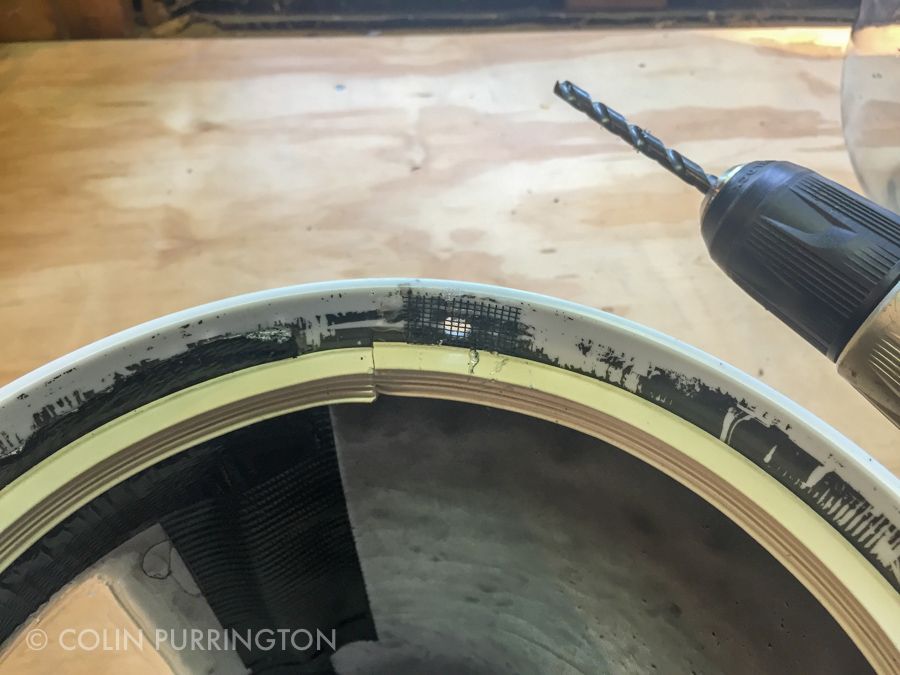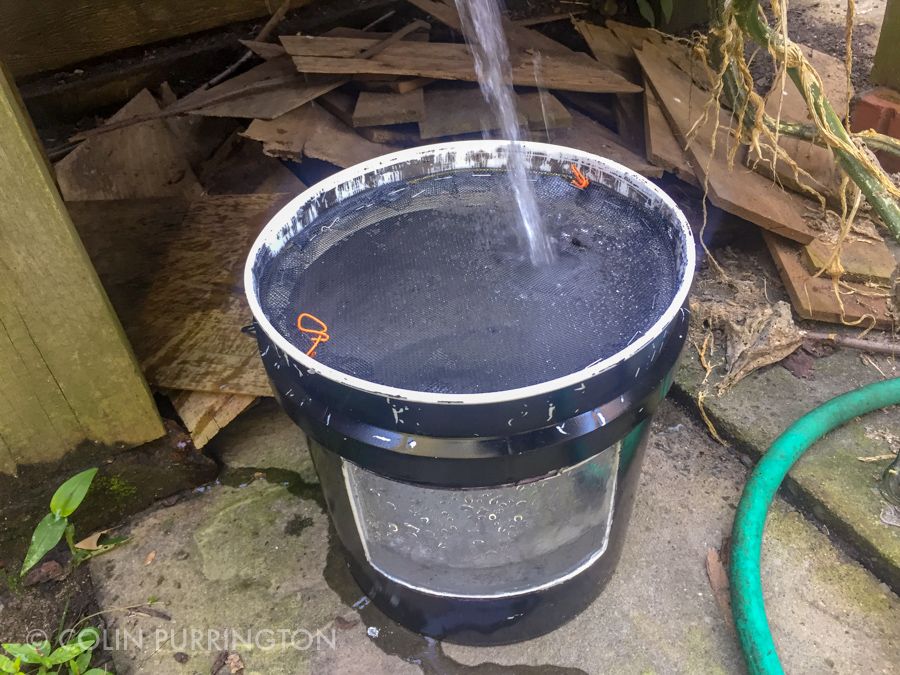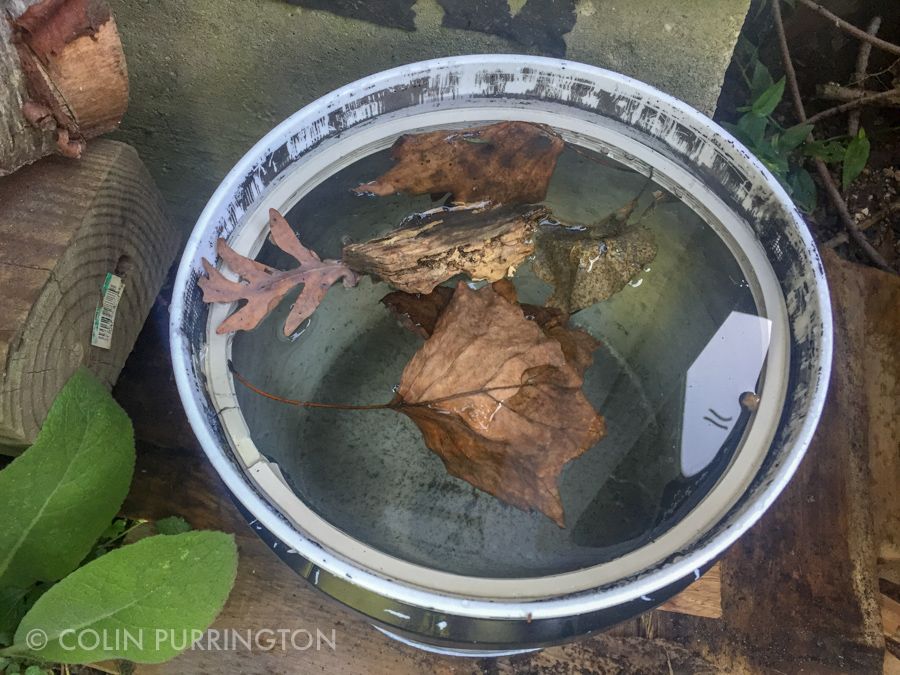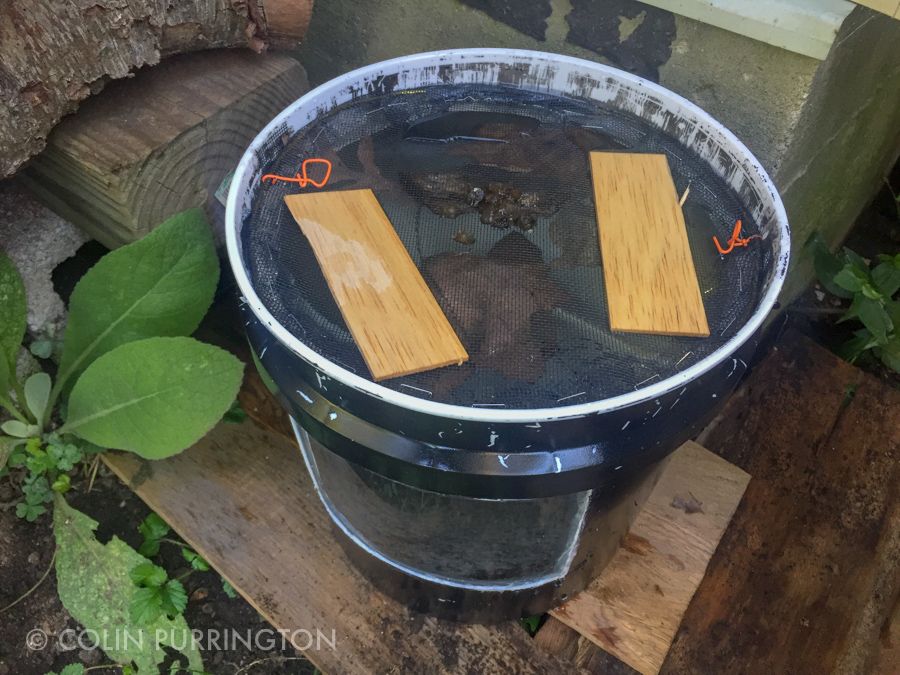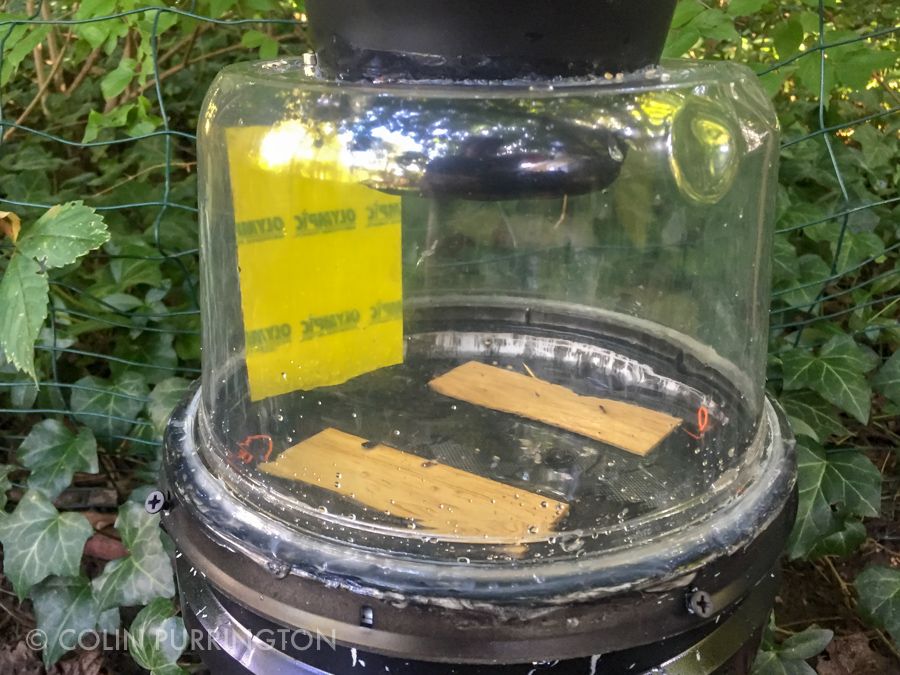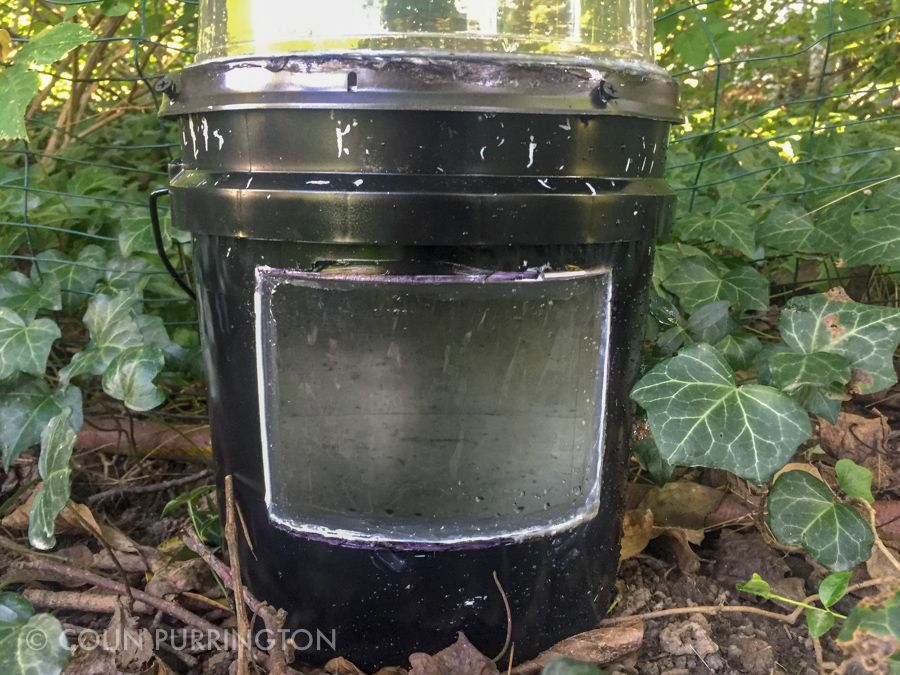This post contains photographs and construction tips for a killer craft I made: an autocidal gravid ovitrap. Pregnant females enter the trap, lay some eggs on or near the stagnant water within, then are prevented from exiting and die. Their progeny also die because a screen at water level prevents larvae from reaching the surface to obtain oxygen. When similar traps have been deployed they bring down mosquito levels substantially and thus are quickly becoming one of the main ways to prevent mosquito outbreaks and disease. Every homeowner should have six. They’d make wonderful gifts.
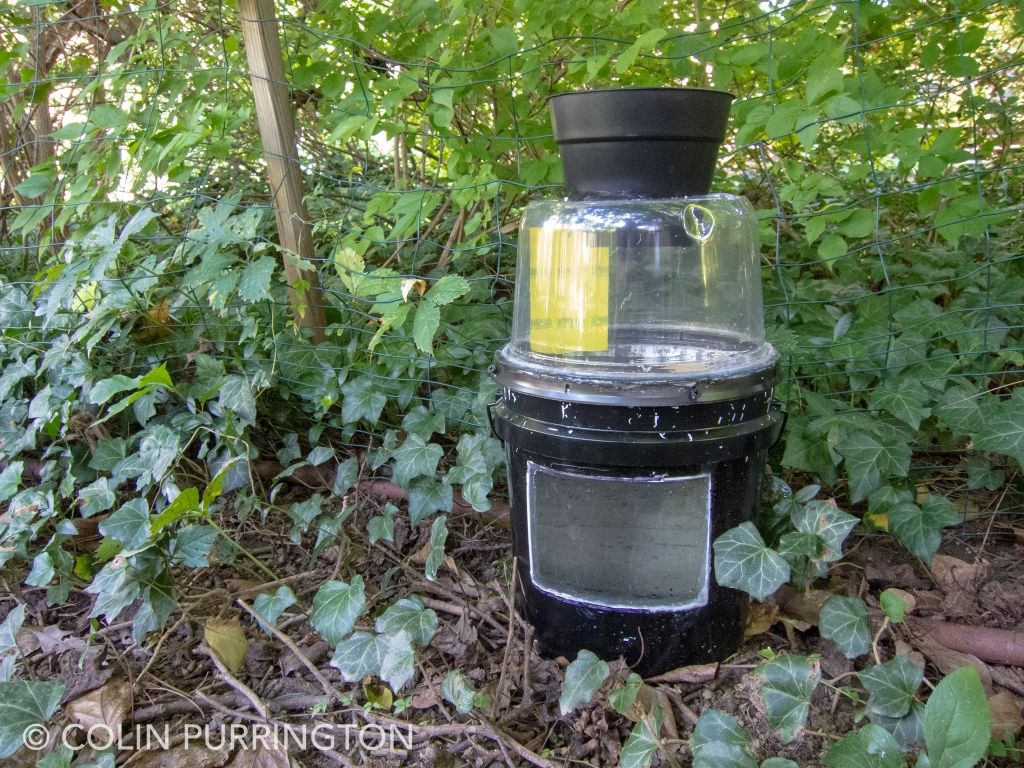
The design features a clear dome that helps trap the females when they are done ovipositing (they go for the light), plus a completely unneeded observation window so I can watch the larvae and pupae (fun for the whole family, plus good for demonstration purposes). It borrows general methodology from gravid Aedes traps (GATs) designed by Dr Scott Richie (James Cook University) and colleagues that recently made news on NPR (here’s an overview; here’s their paywalled journal article). I’ve designed mine to capture species that also lay egg rafts, so it’s not just a GAT. My design doesn’t use insecticide because I wanted the odor of developing larvae to be an attractant to other females (it is, by the way).
What you need
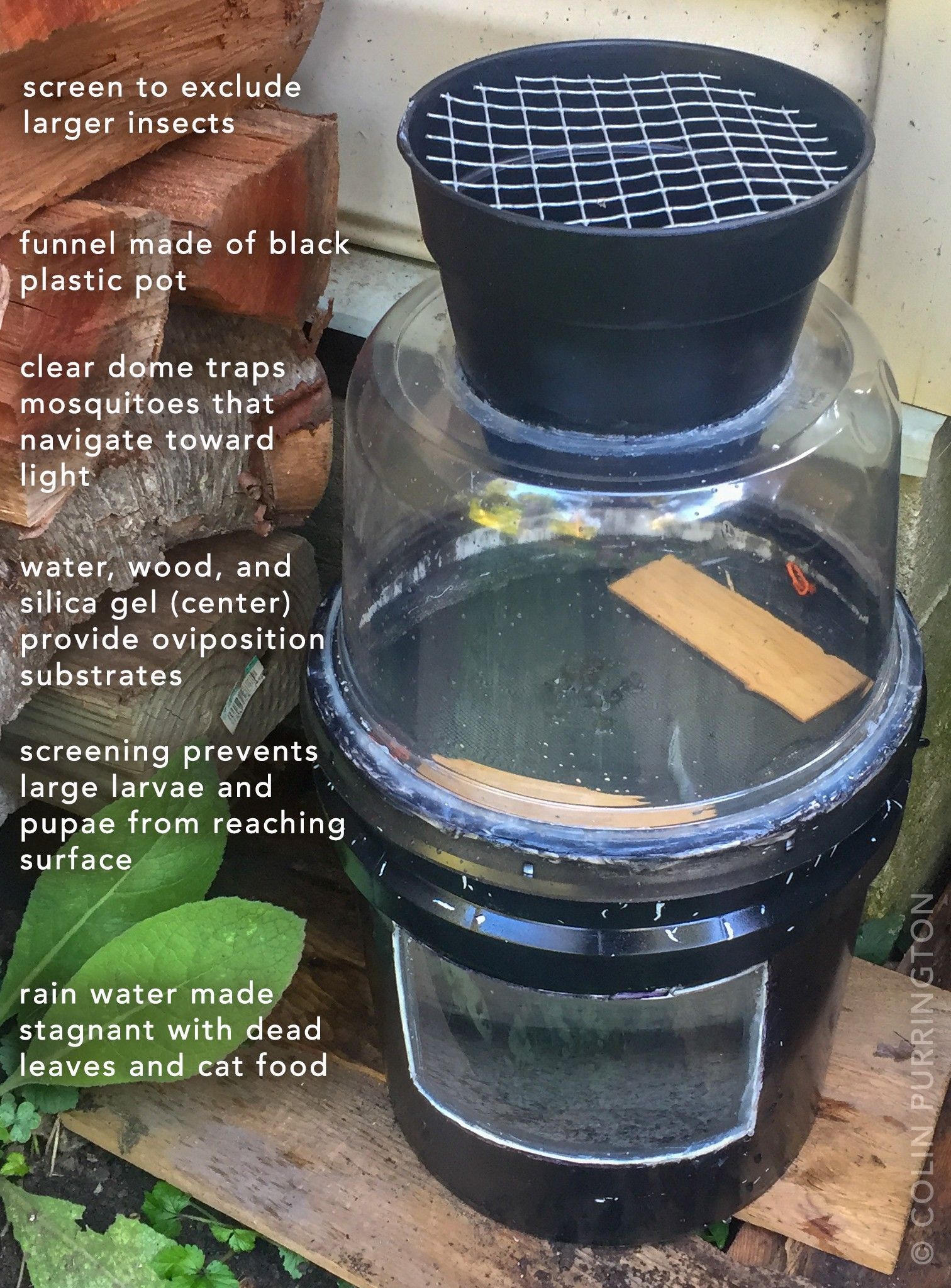 2-gallon bucket
2-gallon bucket- bucket lid
- 6″ plastic pot
- clear dome from cake store
- metal coat hanger
- plastic screening
- stapler
- 3 paperclips
- small neodymium magnet
- silicone adhesive glue
- duck tape
- hardware cloth
- 1-L soda bottle
- 1/4″ foam weatherstripping
- black spray paint
- Dremel tool with cutting bit
- drill with drill bit
- knife
- safety glasses (when Dremeling)
Construction photographs
If you’d like to see photographs larger just click on first image and navigate like a slide show. There are many ways to construct these so if you build one and it looks completely different, don’t worry. This is because if your device is the only stagnant water around, females will use it.
I’ve only just deployed it and it’s rather cold right now so I don’t have any victims yet. But I’m optimistic and am posting now with the hope that somebody will have suggestions on how to improve the design (I’m making more). One improvement I’m definitely going to make is to drop the funnel lower into the dome so it’s harder for females to accidentally fly straight up to escape. And pro-tip if you make the above: attach the lid to pail when spray painting to avoid unwanted buildup where they attach.
I’m also posting in the off chance that a biology teacher might take an interest. Having teams make these would be really fun and then they could deploy them in the woods near the school: bonus points for team that traps the most mosquitoes. It’s fun like the classic egg-drop lab in physics except useful. Students would then take their projects home where they’d continue to be useful. Would make for a great Girl Scout Gold Award / Eagle Scout project.
Other DIY designs
- Basic trap (Dr Van Eden’s)
- 4-month trap (Dr Van Eden’s). Here are photographs.
- Mosquito killing ovitrap (Instructables)
- Sock-based ovitraps (Instructables)
- How to make an ovitrap (Instructables)
- One-way mosquito ovitrap (Mosquitoes Without Borders)
Where to buy
If all of the above sounds like way too much work you can buy them: Biogents GAT Trap (my favorite), Catchmaster Ovi-Catch AGO, Dalen Skeet-O-Trap, Springstar AGO, and Ultimate Mosquito Traps.
Useful articles
Barrera, R., A.J. Mackay, and M. Amador. 2013. A novel autocidal ovitrap for the surveillance and control of Aedes aegypti. Journal of the American Mosquito Control Association, 29:293-296.
Maciel-de-Freitas R., R.C. Peres, F. Alves, M.B. Brandolini. 2008. Mosquito traps designed to capture Aedes aegypti (Diptera: Culicidae) females: preliminary comparison of Adultrap, MosquiTRAP and backpack aspirator efficiency in a dengue-endemic area of Brazil. Mem Inst Oswaldo Cruz. 103: 602-605.
Mackay, A.J., M. Amador, and R. Barrera. 2013. An improved autocidal gravid ovitrap for the control and surveillance of Aedes aegypti. Parasites and Vectors 6:225.
Maire, A. 1985. Effect of axenic larvae on the oviposition site selection by Aedes atropalpus. J. Am. Mosq. Control Assoc. 1:320-323.
Paz-Soldan et. al. 2016 Design and testing of novel lethal ovitrap to reduce populations of Aedes mosquitoes: community-based participatory research between industry, academia and communities in Peru and Thailand. PLoS One 11:8.


